Current Australian border travel restrictions
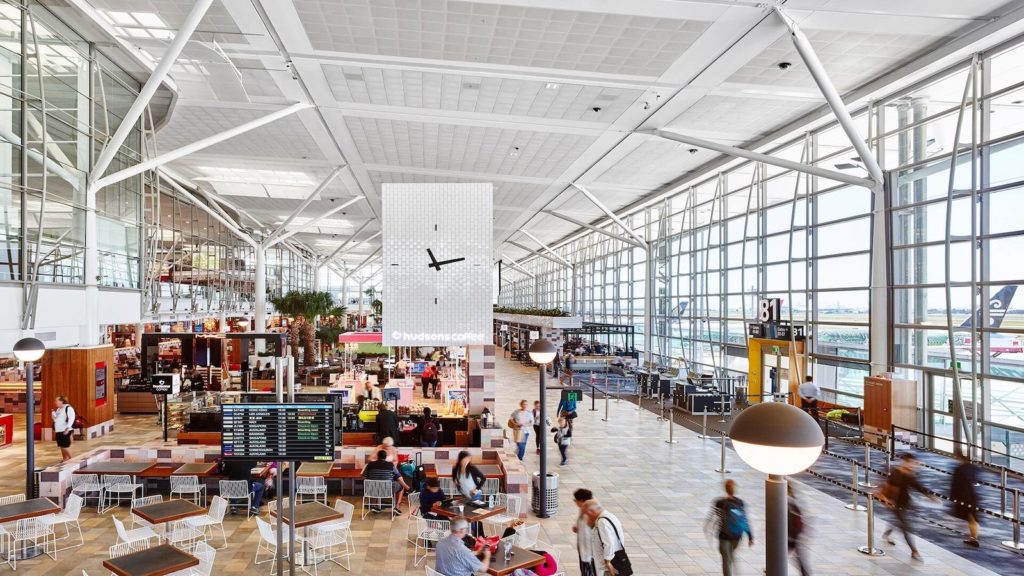
What we'll be covering
Updated: 24 September 2020 at 10:30pm
This guide takes a look at the current state border restrictions that are in place for each state.
New South Wales

Where can New South Wales residents go?
Victoria
You’re allowed to leave and enter Victoria. You don’t have to quarantine after entering or travelling around Victoria.
However, there are restrictions on entering other states and territories from Victoria. Some states are closed to Victorians for the moment — or require travellers from Victoria to go into hotel quarantine — including New South Wales, Tasmania and South Australia.
Check the government website of the state or territory you wish to visit — before leaving Victoria.
You only need to quarantine if you’ve been advised by the Department of Health and Human Services that you have been to a high-risk location. If you’ve been directed to quarantine at home by health authorities, you can’t leave your home unless it’s for emergency medical care. The penalty for a breach of isolation orders can be up to $4,957.
A NSW-Victoria border region has been established, which allows residents with a current border region resident permit to cross the NSW-Victorian border.
Residents in the border region are allowed to cross the border to:
- obtain necessary goods and services
- for work or education
- medical or healthcare
- care or compassionate reasons
- to permanently relocate to NSW
For more information on the border region — including finding out if your home is in the border region — or to apply for a permit, visit nsw.gov.au/covid-19 and search for ‘NSW Victoria border restrictions’.
Queensland
With the exception of the border zone, New South Wales is considered a COVID-19 hotspot.
Border-zone residents live in certain areas on either side of the Queensland-NSW border. A border-zone resident may be someone who lives in Queensland but works or studies in NSW — or vice versa.
They can cross the border for any purpose. However, Queensland border zone residents can’t travel beyond the border zone in NSW. NSW border zone residents can’t travel beyond the border zone in Queensland or NSW.
Queensland’s border zone will expand from 1am on Thursday, 1 October to include the Byron, Ballina, Lismore, Richmond Valley and Glen Innes council areas.
Border residents can apply for a border pass and travel around Queensland for any purpose, and Queenslanders can travel to those places as well.
New South Wales residents who’ve been in a COVID-19 hotspot within the past 14 days won’t be able to enter Queensland and will be turned away at the border. There are very few exceptions to this rule.
You can only enter Queensland — by road — if you are:
- a truck driver
- a worker in transporting freight and logistics
- performing essential activities
- border-zone resident
Returning Queenslanders must pay for 14 days’ mandatory hotel quarantine.
Queenslanders are strongly advised not to travel to NSW.
Western Australia
No one can enter Western Australia unless they’ve been granted an exemption.
Anyone who has been in NSW at any point in the past 14 days will need to take 2 mandatory COVID-19 tests — one when you arrive and one on day 11 of quarantine.
You will only be granted an exemption if you’re:
- a specific essential worker
- a transport or freight worker
- approved to enter by the state emergency coordinator on the advice of the chief medical officer
Transiting through a New South Wales airport is included as being in New South Wales during the past 14 days.
South Australia
From Thursday 24 September, people travelling from New South Wales to South Australia no longer need to self-quarantine for 2 weeks.
All travellers to SA still need to complete a Cross Border Travel Registration form.
Travellers who arrived in SA prior to 12:01am Thursday 24 September must complete their 14 days self-quarantine.
If you choose to return to NSW during this self-quarantine period and then return to South Australia, you’ll be required to complete the balance of days remaining on your 14-day self-quarantine period.
Cross-border community members with current travel exemptions do not need to re-apply.
Tasmania
All travellers arriving in Tasmania need to apply for an electronic G2G (‘Good to go’) PASS from g2gpass.com.au.
All non-essential travellers arriving in Tasmania must enter quarantine for 14 days.
Anyone who quarantines at a hotel will be charged $2,800 per person — or a special family rate — except where there’s extreme hardship.
New South Wales residents — who are not classified as essential travellers — who have been in a high-risk location in the past 14 days won’t be able to enter Tasmania. These locations include the whole of Victoria and certain locations in Sydney. Those travellers will be turned back at their own expense.
For a list of high-risk locations, visit coronavirus.tas.gov.au and search for ‘Current high-risk locations’.
Australian Capital Territory
You should consider travel both to and from the Canberra region very carefully. You should not travel if you’re unwell. If you need to travel, it’s important to practise physical distancing and good hygiene.
The Australian Capital Territory doesn’t have domestic border restrictions — other than with Victoria.
ACT residents are strongly advised not to travel to any parts of Greater Sydney and other locations in NSW where COVID-19 outbreaks are occurring unless absolutely necessary.
If you’ve been to any of the COVID-19-affected locations identified by NSW Health, you must immediately quarantine at home and get tested as soon as possible — even if you don’t have any symptoms. If you get a negative test result, you still need to quarantine for the full 14 days from your visit.
You can find the affected locations at nsw.gov.au/covid-19. Scroll down to ‘View latest news and updates’.
People who have been in the Greater Sydney Area should not visit or work in high-risk settings — including aged-care facilities, hospitals and correctional facilities — for 14 days after leaving these areas.
There is no requirement for these people to quarantine. However, if they develop COVID-19 symptoms, they should immediately quarantine and get tested.
For more information about aged-care facilities, visit covid19.act.gov.au and search for ‘Aged care’.
For information about COVID-19 restrictions in NSW, visit nsw.gov.au/covid-19.
Northern Territory
Strict border controls apply for all access points to the Northern Territory.
Anyone arriving in the Northern Territory must complete a Border Entry Form. You can do this online up to 72 hours before entering the Territory at coronavirus.nt.gov.au.
Once you submit your application online, print it and bring it with you. You must provide your printed form or application reference number on your arrival to the NT.
If you don’t have a printer, you can take a screen shot of your application reference number and show this at the border.
If you arrive in the NT, having travelled from or through a declared hotspot in the past 14 days, you must remain in mandatory supervised quarantine at a designated facility until 14 days have elapsed since you left the hotspot.
You’ll need to pay a quarantine fee, which is:
- $2,500 per person; or
- $5,000 for a family of 2 or more people sharing accommodation
Unaccompanied minors (under 18s) must also quarantine in a designated facility with a parent or responsible adult.
If you intend to travel to the NT from a declared hotspot, you’re strongly urged to reconsider your plans. Likewise, Territorians should reconsider travel to any hotspots.
You’re not considered to have been in a declared hotspot if you were only in the airport — for a stopover, for example — and did not leave the airport.
To find the locations of declared hotspots, visit coronavirus.nt.gov.au and search for ‘hotspots COVID-19’.
From Friday 9 October 2020, the NT will remove Greater Sydney’s status as a hotspot, subject to public health advice.
Anyone who breaches NT’s border restrictions may face a $5,000 fine.
If you’re travelling with a pet, you must arrange to accommodate the pet — at your own expense — before arriving in the NT.
Who can enter New South Wales?
New South Wales only restricts entry to travellers coming from Victoria.
Anyone who has been in Victoria in the past 14 days must not enter NSW unless they’re eligible and hold a current border entry permit.
NSW residents — other than NSW border-zone residents — who plan to return from Victoria can only enter via Sydney airport or another NSW airport. Residents must immediately go into 14 days’ hotel quarantine. If they’re coming from Victoria and are exempt from hotel quarantine, they must quarantine at home for 14 days.
If you’re permanently moving to NSW, you’ll need to fly to Sydney and complete 14 days’ mandatory quarantine.
Travellers arriving from Victoria — including returning NSW residents — will need to pay a fee for their hotel quarantine.
- Travellers will be charged $3,000 for one adult.
Fees for additional occupants are:
- additional adults — $1,000 each
- children under 18 years of age — $500 each
- child under 3 years of age — no additional cost
You won’t be charged more if you’re required to stay in quarantine longer than 14 days. If you stay in quarantine for less than 48 hours, you won’t be charged a fee. If you stay longer than 48 hours but less than 14 days for any reason, you’ll be charged a portion of the applicable quarantine fee — depending on the length of your stay.
All passengers will have police and health checks on arrival. Anyone without a permit must also quarantine for 14 days in special accommodation.
Victorian border region residents don’t need to comply with Victorian stay-at-home directions when they’re in the border region that sits in NSW. They’re not allowed to travel to any part of NSW that’s beyond the border region. They can’t enter NSW if they’ve been to a restricted area in Victoria or a COVID-19 area of concern in the last 14 days.
NSW border region residents must not travel to any part of Victoria that’s beyond the border region or to a COVID-19 area of concern. If they do, their permit won’t authorise them to re-enter NSW and they’ll need to apply for a NSW resident’s permit to come back in. This means they’ll need to fly to Sydney airport and quarantine.
Victoria
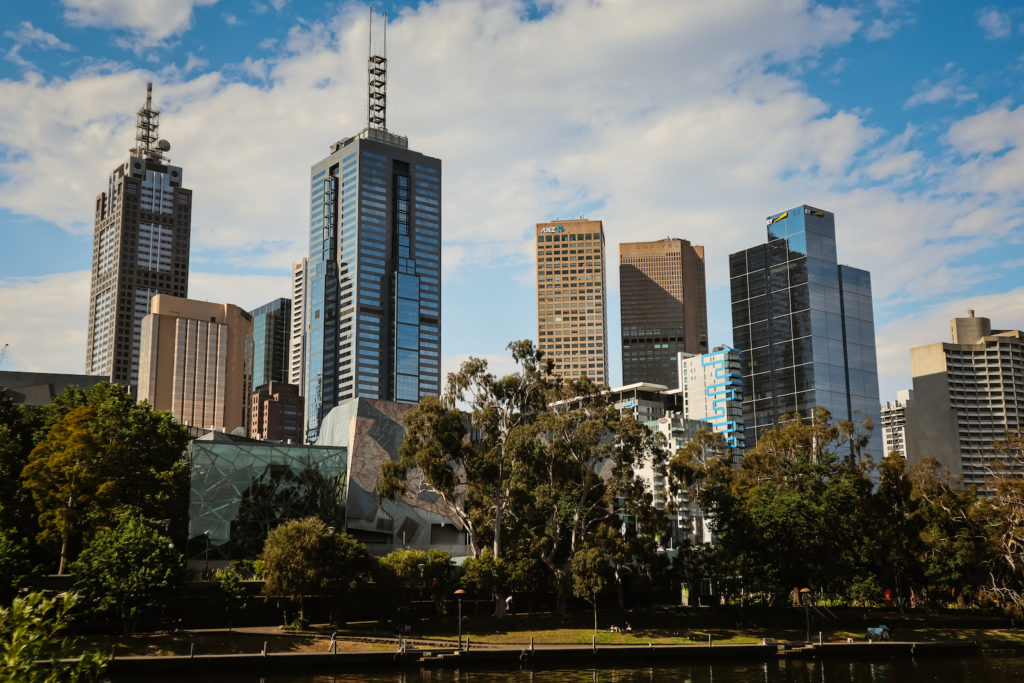
Where can Victorian residents go?
New South Wales
New South Wales has temporarily shut its border with Victoria.
Please refer to ‘Who can enter New South Wales?’ above for the relevant information regarding Victorians access to New South Wales.
Queensland
The entire state of Victoria is considered COVID-19 hotspots.
Victorian residents who’ve been in a COVID-19 hotspot within the past 14 days won’t be able to enter Queensland and will be turned away at the border. There are very few exceptions to this rule.
Queenslanders are strongly advised not to travel to Victoria.
Western Australia
No one can enter Western Australia unless they’ve been granted an exemption.
Anyone who has been in Victoria at any point in the past 14 days will need to take 2 mandatory COVID-19 tests — one when you arrive and one on day 11 of quarantine.
You will only be granted an exemption if you’re:
- a specific essential worker
- a transport or freight worker
- approved to enter by the state emergency coordinator on the advice of the chief medical officer
Transiting through a Victorian airport is included as being in Victoria during the past 14 days.
South Australia
Most people can’t enter SA from Victoria — including SA residents. This includes travellers who have only transited through a Melbourne airport.
You can only enter from Victoria if you’re an essential traveller or a cross-border community resident — see below.
Essential travellers can visit covid-19.sa.gov.au and search for ‘Cross-border travel’ for more information.
Victorian cross-border community residents
There is a 40-kilometre buffer zone on either side of the South Australian-Victorian border. Victorian cross-border community residents can cross the border into South Australia for work, school, shopping and medical appointments.
If you’re a Victorian cross-border community resident entering South Australia, you must have had a COVID-19 test in the last 7 days. You also can’t travel more than 40 kilometres from the border. You must complete a cross-border travel registration form. You can access the form at covid-19.sa.gov.au/restrictions-and-responsibilities. Select ‘Domestic travel restrictions’ and click on ‘Border restrictions’.
Tasmania
All travellers arriving in Tasmania need to apply for an electronic G2G (‘Good to go’) PASS from g2gpass.com.au.
All non-essential travellers arriving in Tasmania must enter quarantine for 14 days.
Anyone who quarantines at a hotel will be charged $2,800 per person — or a special family rate — except where there’s extreme hardship.
Victorian residents — who are not classified as essential travellers — who have been in a high-risk location in the past 14 days won’t be able to enter Tasmania. These locations include the whole of Victoria and certain locations in Sydney. Those travellers will be turned back at their own expense.
For a list of high-risk locations, visit coronavirus.tas.gov.au and search for ‘Current high-risk locations’.
Australian Capital Territory
ACT residents are strongly advised not to travel to any parts of Victoria unless absolutely necessary.
Entry to the ACT from Victoria is now only possible through Canberra Airport, by air. You can no longer enter the ACT from Victoria by road.
If you’ve already applied for an exemption to enter the ACT by road, you’ll need to reapply and request to travel by air.
ACT residents in Victoria can return home by air if they quarantine at home — or in a hotel approved by ACT Health — for 14 days. They must notify ACT Health that they’re returning at least 72 hours before their intended travel date.
Non-ACT residents who wish to enter the ACT from Victoria by air must apply for an exemption at least 72 hours before their intended travel date. You can apply for an exemption at covid19.act.gov.au/exemption-application.
Non-ACT residents who have been granted an exemption will also need to quarantine at home— or in a hotel approved by ACT Health — for 14 days.
Arrivals from Victoria will be required to provide evidence that they:
- are an ACT resident; or
- have an exemption; and
- they notified ACT Health of their travel to the ACT
For more information about travel in the ACT, visit covid19.act.gov.au/community/travel. You can also call the COVID-19 helpline for Canberrans on (02) 6207 7244, between 8am and 8pm daily.
For information about COVID-19 restrictions in Victoria, go to vic.gov.au/coronavirus
Northern Territory
If you arrive in the NT, having travelled from or through a declared hotspot in the past 14 days, you must remain in mandatory supervised quarantine at a designated facility until 14 days have elapsed since you left the hotspot.
You’ll need to pay a quarantine fee, which is:
- $2,500 per person; or
- $5,000 for a family of 2 or more people sharing accommodation
Unaccompanied minors (under 18s) must also quarantine in a designated facility with a parent or responsible adult.
If you intend to travel to the NT from a declared hotspot, you’re strongly urged to reconsider your plans. Likewise, Territorians should reconsider travel to any hotspots.
You’re not considered to have been in a declared hotspot if you were only in the airport — for a stopover, for example — and did not leave the airport.
To find the locations of declared hotspots, visit coronavirus.nt.gov.au and search for ‘hotspots COVID-19’.
Who can enter Victoria?
You’re allowed to leave and enter Victoria. You don’t have to quarantine after entering or travelling around Victoria.
However, there are restrictions on entering other states and territories from Victoria. Some states are closed to Victorians for the moment — or require travellers from Victoria to go into hotel quarantine — including New South Wales, Tasmania and South Australia.
Check the government website of the state or territory you wish to visit — before leaving Victoria.
You only need to quarantine if you’ve been advised by the Department of Health and Human Services that you have been to a high-risk location. If you’ve been directed to quarantine at home by health authorities, you can’t leave your home unless it’s for emergency medical care. The penalty for a breach of isolation orders can be up to $4,957.
A NSW-Victoria border region has been established, which allows residents with a current border region resident permit to cross the NSW-Victorian border.
Residents in the border region are allowed to cross the border to:
- obtain necessary goods and services
- for work or education
- medical or healthcare
- care or compassionate reasons
- to permanently relocate to NSW
For more information on the border region — including finding out if your home is in the border region — or to apply for a permit, visit nsw.gov.au/covid-19 and search for ‘NSW Victoria border restrictions’.
Queensland
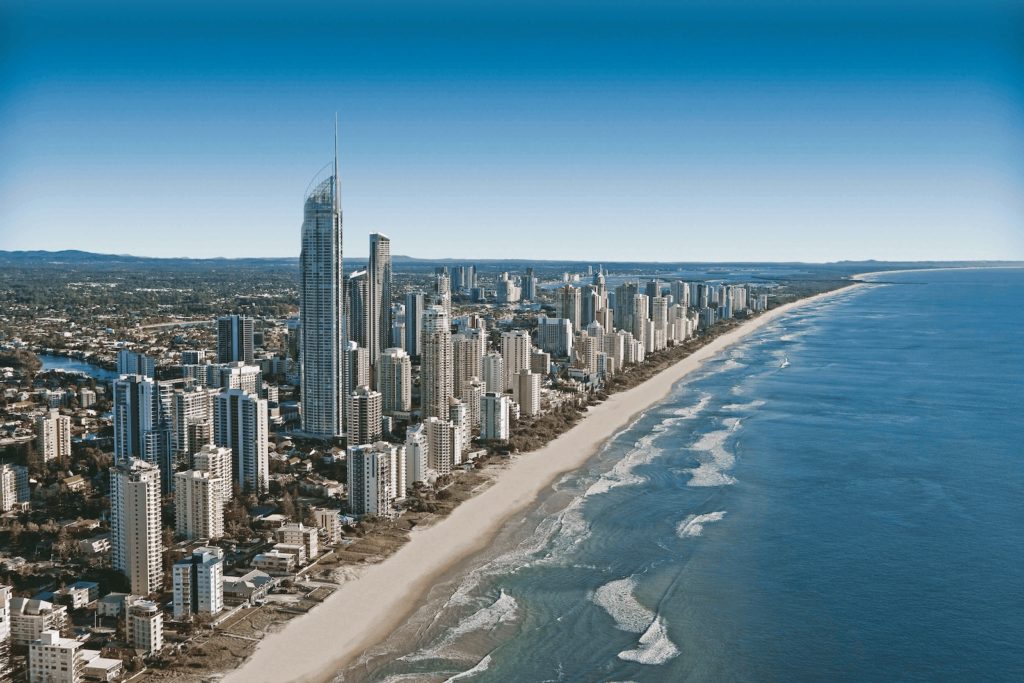
Where can Queensland residents go?
New South Wales
With the exception of the border zone, New South Wales is considered a COVID-19 hotspot.
Queensland’s border zone will expand from 1am on Thursday 1 October to include the Byron, Ballina, Lismore, Richmond Valley and Glen Innes council areas. Border residents can apply for a border pass and travel around Queensland for any purpose, and Queenslanders can travel to those places as well.
Queensland residents can return home but must quarantine in government-designated accommodation at their own expense for 14 days if they’ve been in a COVID-19 hotspot in the past 2 weeks.
You can only enter Queensland from a hotspot if you travel by air. You can’t travel by road from a hotspot.
Victoria
You’re allowed to leave and enter Victoria. You don’t have to quarantine after entering or travelling around Victoria.
Returning Queenslanders must pay for 14 days’ mandatory hotel quarantine.
Queenslanders are strongly advised not to travel to Victoria.
Western Australia
No one can enter Western Australia unless they’ve been granted an exemption.
Anyone who has been in Queensland at any point in the past 14 days will need to take 2 mandatory COVID-19 tests — one when you arrive and one on day 11 of quarantine.
You will only be granted an exemption if you’re:
- a specific essential worker
- a transport or freight worker
- approved to enter by the state emergency coordinator on the advice of the chief medical officer
Transiting through a Queensland airport is included as being in Queensland during the past 14 days.
South Australia
Although there are currently no border restrictions with Queensland, the South Australian Government is recommending residents reconsider their travel to any parts of Queensland and be aware that border restrictions could change, depending on the current situation.
Tasmania
All travellers arriving in Tasmania need to apply for an electronic G2G (‘Good to go’) PASS from g2gpass.com.au.
All non-essential travellers arriving in Tasmania must enter quarantine for 14 days.
Anyone who quarantines at a hotel will be charged $2,800 per person — or a special family rate — except where there’s extreme hardship.
Queensland residents — who are not classified as essential travellers — who have been in a high-risk location in the past 14 days won’t be able to enter Tasmania. These locations include the whole of Victoria and certain locations in Sydney. Those travellers will be turned back at their own expense.
For a list of high-risk locations, visit coronavirus.tas.gov.au and search for ‘Current high-risk locations’.
Australian Capital Territory
People who have been in the following Queensland local government areas, which have a greater risk of community transmission, should not visit or work in high-risk settings — including aged-care facilities, hospitals and correctional facilities — for 14 days after leaving them.
- Brisbane City
- Cherbourg Aboriginal Shire
- Gold Coast City
- Goondiwindi Region
- Ipswich City
- Lockyer Valley
- Logan City
- Moreton Bay
- Redland City
- Scenic Rim Region
- Somerset Region
- South Burnett Region
- Southern Downs Region
- Toowoomba Region
- Western Downs Region
There is no requirement for these people to quarantine. However, if they develop COVID-19 symptoms, they should immediately quarantine and get tested.
For more information about aged-care facilities, visit covid19.act.gov.au and search for ‘Aged care’.
For more information about COVID-19 restrictions in Queensland, visit covid19.qld.gov.au.
Northern Territory
If you arrive in the NT, having travelled from or through a declared hotspot in the past 14 days, you must remain in mandatory supervised quarantine at a designated facility until 14 days have elapsed since you left the hotspot.
You’ll need to pay a quarantine fee, which is:
- $2,500 per person; or
- $5,000 for a family of 2 or more people sharing accommodation
Unaccompanied minors (under 18s) must also quarantine in a designated facility with a parent or responsible adult.
If you intend to travel to the NT from a declared hotspot, you’re strongly urged to reconsider your plans. Likewise, Territorians should reconsider travel to any hotspots.
You’re not considered to have been in a declared hotspot if you were only in the airport — for a stopover, for example — and did not leave the airport.
To find the locations of declared hotspots, visit coronavirus.nt.gov.au and search for ‘hotspots COVID-19’.
Who can enter Queensland?
Queenslanders can now travel anywhere within Queensland for any reason, including recreation and holidays.
Queensland residents can return home but must quarantine in government-designated accommodation at their own expense for 14 days if they’ve been in a COVID-19 hotspot in the past 2 weeks.
You can only enter Queensland from a hotspot if you travel by air. You can’t travel by road from a hotspot.
Visit qld.gov.au and search for ‘COVID-19 hotspots‘.
People in all other states and territories can come to Queensland if they haven’t been in a COVID-19 hotspot in the past 14 days. All of Victoria, NSW — besides the Qld-NSW border zone — and the ACT is currently considered a hotspot. See below for more information.
Queensland’s border zone will expand from 1am on Thursday 1 October to include the Byron, Ballina, Lismore, Richmond Valley and Glen Innes council areas. Border residents can apply for a border pass and travel around Queensland for any purpose, and Queenslanders can travel to those places as well.
Non-Queensland residents who’ve been in a COVID-19 hotspot within the past 14 days won’t be able to enter Queensland and will be turned away at the border. There are very few exceptions to this rule.
You can only enter Queensland — by road — if you are:
- a truck driver
- a worker in transporting freight and logistics
- performing essential activities
- border-zone resident
To enter Queensland, you must apply for a Queensland Border Declaration Pass — see below for more information.
However, you can enter Queensland by road, rail or air from a hotspot such as NSW to receive essential healthcare or support someone needing essential healthcare. For example, if you’re a parent of a child and treatment can’t be provided in the hotspot. You won’t require an exemption to do this. However, you’ll need to provide written evidence of the time and place that the essential healthcare is set to occur, such as a letter from the hospital.
Essential healthcare includes an appointment at:
- the Queensland Children’s Hospital, which is confirmed in writing by the hospital
- a Queensland hospital and health service or associated outreach location, confirmed in writing by the service
- a Queensland private health facility or ancillary clinic or service, confirmed in writing by the service or health practitioner
- an Aboriginal and Torres Strait Islander Community Controlled Health Service, confirmed in writing by the service
- a health practitioner at another place, confirmed in writing by the provider.
From 1:00am on Friday 25 September, 2020, the ACT won’t be considered a hotspot and people in the Territory will be allowed to visit Queensland.
Western Australia
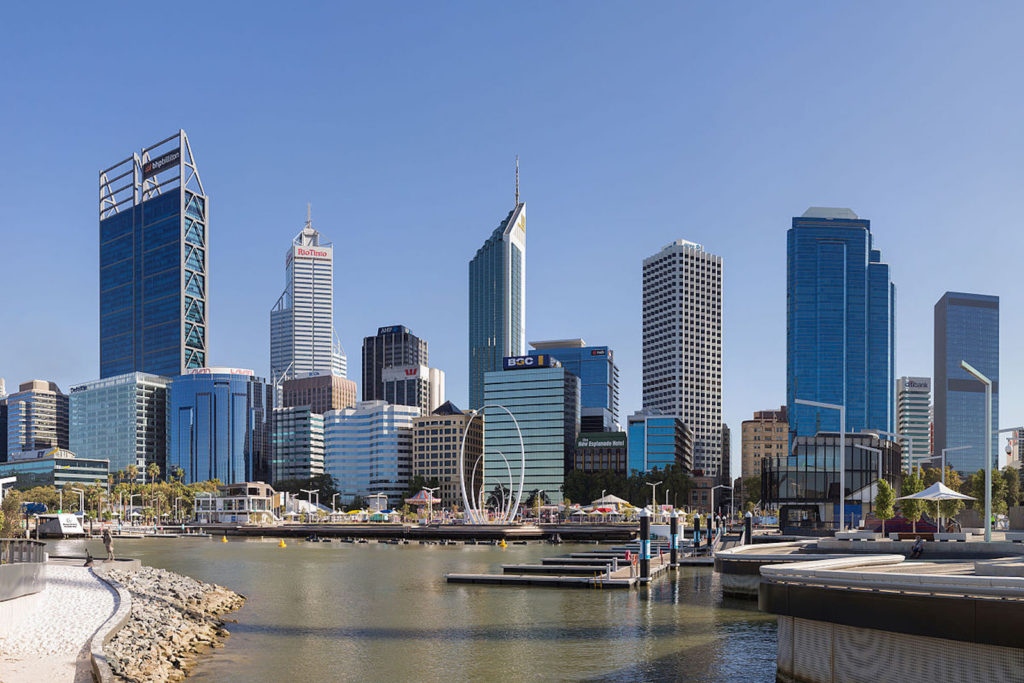
Where can Western Australian residents go?
Note that if a Western Australian resident leaves the state, they will need to be granted an exemption to re-enter back into Western Australia and then must self-quarantine for 14 days.
New South Wales
New South Wales does not have border restrictions with Western Australia, but residents will need an exemption to re-enter the state.
Victoria
Victoria does not have border restrictions with Western Australia, but residents will need an exemption to re-enter the state.
Queensland
Western Australian residents can come to Queensland if they haven’t been in a COVID-19 hotspot in the last 14 days.
South Australia
Travellers from Western Australia can enter South Australia without restriction.
Tasmania
All travellers arriving in Tasmania need to apply for an electronic G2G (‘Good to go’) PASS from g2gpass.com.au.
All non-essential travellers arriving in Tasmania must enter quarantine for 14 days.
Anyone who quarantines at a hotel will be charged $2,800 per person — or a special family rate — except where there’s extreme hardship.
Western Australian residents — who are not classified as essential travellers — who have been in a high-risk location in the past 14 days won’t be able to enter Tasmania. These locations include the whole of Victoria and certain locations in Sydney. Those travellers will be turned back at their own expense.
For a list of high-risk locations, visit coronavirus.tas.gov.au and search for ‘Current high-risk locations’.
Australian Capital Territory
The ACT does not have border restrictions with Western Australia, but residents will need an exemption to re-enter the state.
Northern Territory
If you arrive in the NT, having travelled from or through a declared hotspot in the past 14 days, you must remain in mandatory supervised quarantine at a designated facility until 14 days have elapsed since you left the hotspot.
You’ll need to pay a quarantine fee, which is:
- $2,500 per person; or
- $5,000 for a family of 2 or more people sharing accommodation
Unaccompanied minors (under 18s) must also quarantine in a designated facility with a parent or responsible adult.
If you intend to travel to the NT from a declared hotspot, you’re strongly urged to reconsider your plans. Likewise, Territorians should reconsider travel to any hotspots.Paragraph
You’re not considered to have been in a declared hotspot if you were only in the airport — for a stopover, for example — and did not leave the airport.
To find the locations of declared hotspots, visit coronavirus.nt.gov.au and search for ‘hotspots COVID-19’.
Who can enter Western Australia?
No one can enter Western Australia — including WA residents — unless they’ve been granted an exemption.
Exemptions apply for:
- senior government officials in the course of their duties
- people with specialist skills not available in WA
- emergency workers
- entry on compassionate grounds
- people otherwise seeking approval to enter WA
Visit wa.gov.au and click on ‘COVID-19 Travel advice’ for the full list of exemptions.
South Australia
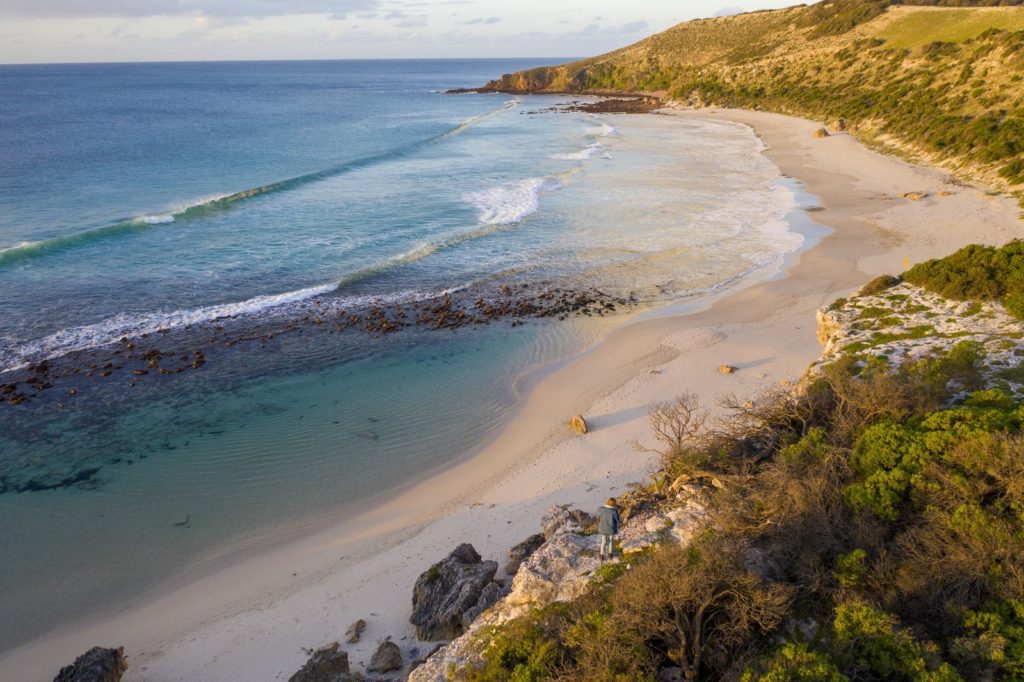
Where can South Australian residents go?
New South Wales
From Thursday 24 September, people travelling from New South Wales to South Australia no longer need to self-quarantine for 2 weeks.
All travellers to SA still need to complete a Cross Border Travel Registration form.
Travellers who arrived in SA prior to 12:01am Thursday 24 September must complete their 14 days self-quarantine.
If you choose to return to NSW during this self-quarantine period and then return to South Australia, you’ll be required to complete the balance of days remaining on your 14-day self-quarantine period.
Cross-border community members with current travel exemptions do not need to re-apply.
Victoria
You’re allowed to leave and enter Victoria. You don’t have to quarantine after entering or travelling around Victoria.
However, there are restrictions on entering other states and territories from Victoria. Some states are closed to Victorians for the moment — or require travellers from Victoria to go into hotel quarantine — including New South Wales, Tasmania and South Australia.
Check the government website of the state or territory you wish to visit — before leaving Victoria.
You only need to quarantine if you’ve been advised by the Department of Health and Human Services that you have been to a high-risk location. If you’ve been directed to quarantine at home by health authorities, you can’t leave your home unless it’s for emergency medical care. The penalty for a breach of isolation orders can be up to $4,957.
Queensland
People from South Australia can come to Queensland if they haven’t been in a COVID-19 hotspot in the past 14 days. All of Victoria, NSW — besides the Qld-NSW border zone — and the ACT is currently considered a hotspot.
From 1:00am on Friday 25 September, 2020, the ACT won’t be considered a hotspot and people in the Territory will be allowed to visit Queensland.
Western Australia
No one can enter Western Australia unless they’ve been granted an exemption.
Anyone who has been in South Australia at any point in the past 14 days will need to take 2 mandatory COVID-19 tests — one when you arrive and one on day 11 of quarantine.
You will only be granted an exemption if you’re:
- a specific essential worker
- a transport or freight worker
- approved to enter by the state emergency coordinator on the advice of the chief medical officer
Transiting through a South Australian airport is included as being in South Australia during the past 14 days.
Tasmania
All travellers arriving in Tasmania need to apply for an electronic G2G (‘Good to go’) PASS from g2gpass.com.au.
All non-essential travellers arriving in Tasmania must enter quarantine for 14 days.
Anyone who quarantines at a hotel will be charged $2,800 per person — or a special family rate — except where there’s extreme hardship.
South Australian residents — who are not classified as essential travellers — who have been in a high-risk location in the past 14 days won’t be able to enter Tasmania. These locations include the whole of Victoria and certain locations in Sydney. Those travellers will be turned back at their own expense.
For a list of high-risk locations, visit coronavirus.tas.gov.au and search for ‘Current high-risk locations’.
Australian Capital Territory
The Australian Capital Territory does not have domestic border restrictions with South Australia.
Northern Territory
If you arrive in the NT, having travelled from or through a declared hotspot in the past 14 days, you must remain in mandatory supervised quarantine at a designated facility until 14 days have elapsed since you left the hotspot.
You’ll need to pay a quarantine fee, which is:
- $2,500 per person; or
- $5,000 for a family of 2 or more people sharing accommodation
Unaccompanied minors (under 18s) must also quarantine in a designated facility with a parent or responsible adult.
If you intend to travel to the NT from a declared hotspot, you’re strongly urged to reconsider your plans. Likewise, Territorians should reconsider travel to any hotspots.
You’re not considered to have been in a declared hotspot if you were only in the airport — for a stopover, for example — and did not leave the airport.
To find the locations of declared hotspots, visit coronavirus.nt.gov.au and search for ‘hotspots COVID-19’.
Who can enter South Australia?
Before entering South Australia you must complete the Cross Border Travel Registration on the SA Police website at least 3 days before you depart.
Authorities will assess your application within 72 hours to determine if you can enter SA, travel without restriction, or you must self-quarantine on arrival.
Victoria arrivals
Most people can’t enter SA from Victoria — including SA residents. This includes travellers who have only transited through a Melbourne airport.
You can only enter from Victoria if you’re an essential traveller or a cross-border community resident — see below.
Essential travellers can visit covid-19.sa.gov.au and search for ‘Cross-border travel’ for more information.
Victorian cross-border community residents
There is a 40-kilometre buffer zone on either side of the South Australian-Victorian border. Victorian cross-border community residents can cross the border into South Australia for work, school, shopping and medical appointments.
If you’re a Victorian cross-border community resident entering South Australia, you must have had a COVID-19 test in the last 7 days. You also can’t travel more than 40 kilometres from the border. You must complete a cross-border travel registration form. You can access the form at covid-19.sa.gov.au/restrictions-and-responsibilities. Select ‘Domestic travel restrictions’ and click on ‘Border restrictions’.
NSW arrivals
From Thursday 24 September, people travelling from New South Wales to South Australia no longer need to self-quarantine for 2 weeks.
All travellers to SA still need to complete a Cross Border Travel Registration form.
Travellers who arrived in SA prior to 12:01am Thursday 24 September must complete their 14 days self-quarantine.
If you choose to return to NSW during this self-quarantine period and then return to South Australia, you’ll be required to complete the balance of days remaining on your 14-day self-quarantine period.
Cross-border community members with current travel exemptions do not need to re-apply.
ACT arrivals
Travellers from the Australian Capital Territory can enter SA and won’t need to quarantine once they arrive.
Travellers from the ACT still need to complete a Cross Border Travel Registration pre-approval form on the SA Police website. You’ll need to declare that you haven’t been to Victoria in the 14 days prior to your arrival in SA.
Queensland arrivals
There are currently no border restrictions with Queensland.
South Australians who have been to the Greater Brisbane or Ipswich areas in Queensland since 22 July are advised to monitor for symptoms and get tested even if you develop only mild symptoms.
Other State and Territory arrivals
Travellers from the Northern Territory, Tasmania and Western Australia can enter South Australia without restriction.
Tasmania
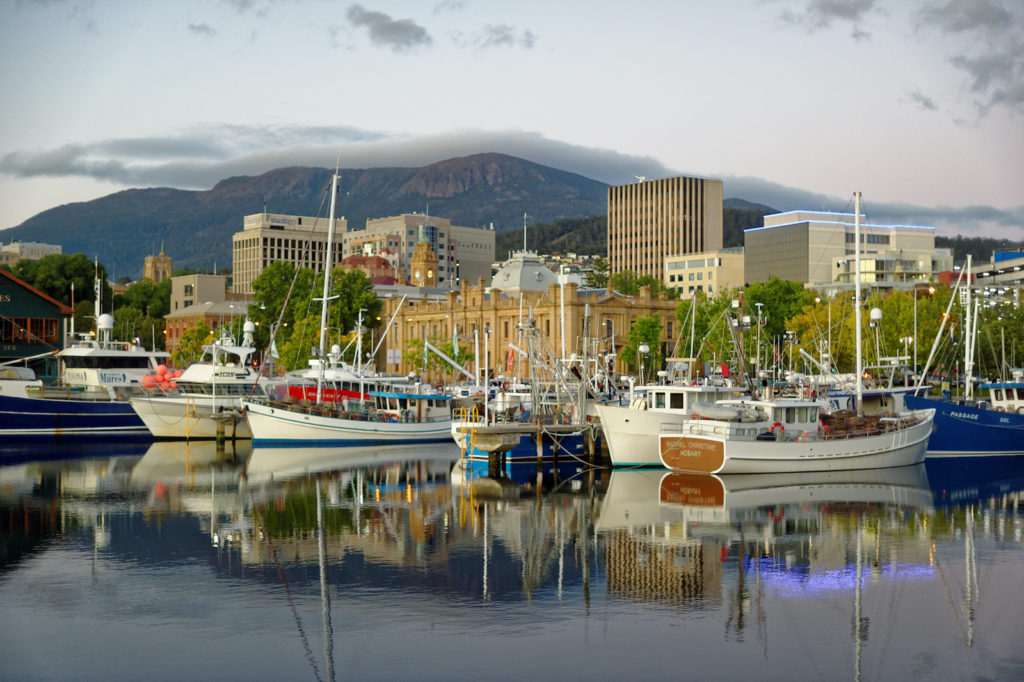
Where can Tasmanian residents go?
Note that if a Tasmanian resident leaves the state, they will need to self-quarantine for 14 days upon arrival back into Tasmania.
New South Wales
New South Wales does not have border restrictions with Tasmania.
Victoria
You’re allowed to leave and enter Victoria. You don’t have to quarantine after entering or travelling around Victoria.
However, there are restrictions on entering other states and territories from Victoria. Some states are closed to Victorians for the moment — or require travellers from Victoria to go into hotel quarantine — including New South Wales, Tasmania and South Australia.
Check the government website of the state or territory you wish to visit — before leaving Victoria.
You only need to quarantine if you’ve been advised by the Department of Health and Human Services that you have been to a high-risk location. If you’ve been directed to quarantine at home by health authorities, you can’t leave your home unless it’s for emergency medical care. The penalty for a breach of isolation orders can be up to $4,957.
Queensland
People from Tasmania can come to Queensland if they haven’t been in a COVID-19 hotspot in the past 14 days. All of Victoria, NSW — besides the Qld-NSW border zone — and the ACT is currently considered a hotspot.
From 1:00am on Friday 25 September, 2020, the ACT won’t be considered a hotspot and people in the Territory will be allowed to visit Queensland.
Western Australia
Tasmanian residents cannot enter Western Australia unless they’ve been granted an exemption.
Exemptions apply for:
- senior government officials in the course of their duties
- people with specialist skills not available in WA
- emergency workers
- entry on compassionate grounds
- people otherwise seeking approval to enter WA
South Australia
Travellers from Tasmania can enter South Australia without restriction.
Australian Capital Territory
The Australian Capital Territory does not have domestic border restrictions with Tasmania.
Northern Territory
If you arrive in the NT, having travelled from or through a declared hotspot in the past 14 days, you must remain in mandatory supervised quarantine at a designated facility until 14 days have elapsed since you left the hotspot.
You’ll need to pay a quarantine fee, which is:
- $2,500 per person; or
- $5,000 for a family of 2 or more people sharing accommodation
Unaccompanied minors (under 18s) must also quarantine in a designated facility with a parent or responsible adult.
If you intend to travel to the NT from a declared hotspot, you’re strongly urged to reconsider your plans. Likewise, Territorians should reconsider travel to any hotspots.
You’re not considered to have been in a declared hotspot if you were only in the airport — for a stopover, for example — and did not leave the airport.
To find the locations of declared hotspots, visit coronavirus.nt.gov.au and search for ‘hotspots COVID-19’.
Who can enter Tasmania?
All travellers arriving in Tasmania need to apply for an electronic G2G (‘Good to go’) PASS from g2gpass.com.au.
All non-essential travellers arriving in Tasmania must enter quarantine for 14 days.
Tasmanian residents can quarantine in their home. Non-Tasmanian residents must quarantine in accommodation provided by the Government.
Anyone who quarantines at a hotel will be charged $2,800 per person — or a special family rate — except where there’s extreme hardship.
Non-Tasmanian residents — who are not classified as essential travellers — who have been in a high-risk location in the past 14 days won’t be able to enter Tasmania. These locations include the whole of Victoria and certain locations in Sydney. Those travellers will be turned back at their own expense.
For a list of high-risk locations, visit coronavirus.tas.gov.au and search for ‘Current high-risk locations’.
Tasmanian residents who’ve been to a high-risk location — including families with children and fly-in, fly-out workers — will need to quarantine in government-designated accommodation.
People who’ve transited through an airport or seaport in a high-risk location — but not left the port — are not considered to have been in a high-risk location.
Essential travellers who’ve been to a high-risk location may not need to quarantine. But they’ll need to comply with public health rules such as limiting their movement, wearing a face mask and will be tested for COVID-19 on arrival.
To find out if you qualify as an essential traveller, visit coronavirus.tas.gov.au and search for ‘Essential travellers’.
From Monday 21 September 2020, Tasmanian fly-in fly-out, or FIFO, workers who work interstate in low-risk areas for extended periods won’t have to quarantine when they return to Tasmania.
They must apply as a Category 8 essential traveller under the Schedule of Specified Persons when they register for a G2G PASS. For more information, visit coronavirus.tas.gov.au and select ‘Important community updates’.
All travellers are required to have a health check when they arrive in Tasmania. This includes symptom and temperature checks. This health screening is conducted at all Tasmanian airports and ports — including King and Flinders Islands. However, travellers can complete part of the symptom check online in the hour before they travel.
Anyone with symptoms will be asked to have a COVID-19 test and directed to quarantine at their destination — whether that’s their home or at another accommodation, including government-assigned accommodation — while they wait for their results.
The Spirit of Tasmania will not be available to travellers from SA, WA or the NT — only Tasmanians returning home or essential travellers.
Border restrictions will remain in place in Tasmania until at least 1 December 2020.
Australian Capital Territory
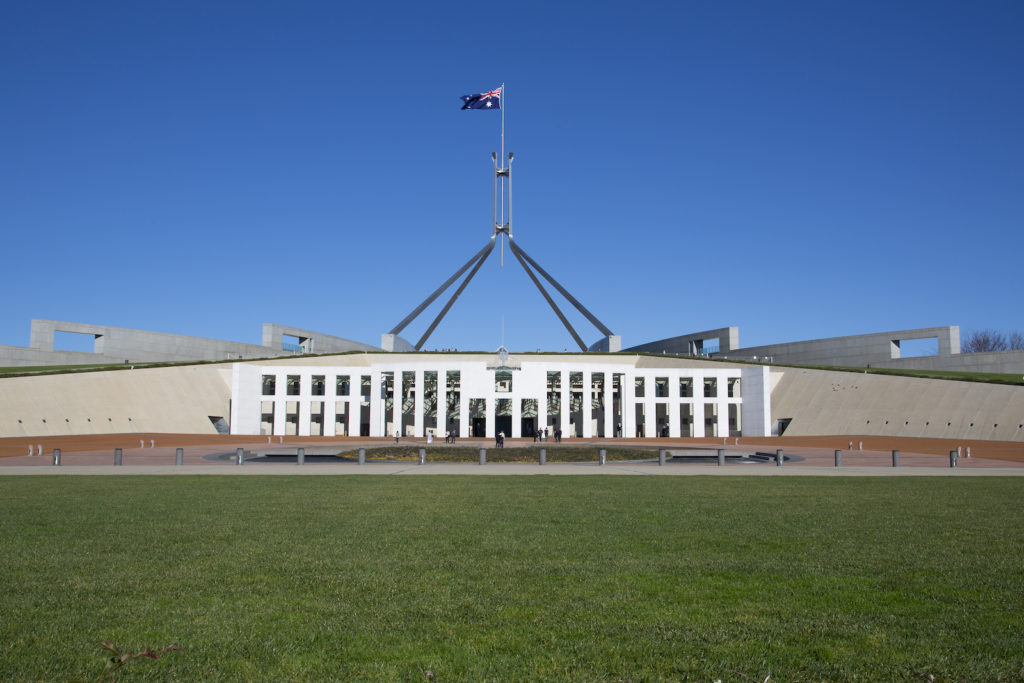
Where can residents go?
New South Wales
New South Wales does not have border restrictions with the Australian Capital Territory.
Victoria
You’re allowed to leave and enter Victoria. You don’t have to quarantine after entering or travelling around Victoria.
However, there are restrictions on entering other states and territories from Victoria. Some states are closed to Victorians for the moment — or require travellers from Victoria to go into hotel quarantine — including New South Wales, Tasmania and South Australia.
Check the government website of the state or territory you wish to visit — before leaving Victoria.
You only need to quarantine if you’ve been advised by the Department of Health and Human Services that you have been to a high-risk location. If you’ve been directed to quarantine at home by health authorities, you can’t leave your home unless it’s for emergency medical care. The penalty for a breach of isolation orders can be up to $4,957.
Queensland
The Australian Capital Territory is considered a COVID-19 hotspot.
ACT residents who’ve been in a COVID-19 hotspot within the past 14 days won’t be able to enter Queensland and will be turned away at the border. There are very few exceptions to this rule.
From 1:00am on Friday 25 September, 2020, the ACT won’t be considered a hotspot and people in the Territory will be allowed to visit Queensland.
Western Australia
Australian Capital Territory residents cannot enter Western Australia unless they’ve been granted an exemption.
Exemptions apply for:
- senior government officials in the course of their duties
- people with specialist skills not available in WA
- emergency workers
- entry on compassionate grounds
- people otherwise seeking approval to enter WA
South Australia
Travellers from the Australian Capital Territory can enter SA and won’t need to quarantine once they arrive.
Travellers from the ACT still need to complete a Cross Border Travel Registration pre-approval form on the SA Police website. You’ll need to declare that you haven’t been to Victoria in the 14 days prior to your arrival in SA.
Tasmania
All travellers arriving in Tasmania need to apply for an electronic G2G (‘Good to go’) PASS from g2gpass.com.au.
All non-essential travellers arriving in Tasmania must enter quarantine for 14 days.
Anyone who quarantines at a hotel will be charged $2,800 per person — or a special family rate — except where there’s extreme hardship.
Tasmanian residents — who are not classified as essential travellers — who have been in a high-risk location in the past 14 days won’t be able to enter Tasmania. These locations include the whole of Victoria and certain locations in Sydney. Those travellers will be turned back at their own expense.
For a list of high-risk locations, visit coronavirus.tas.gov.au and search for ‘Current high-risk locations’.
Northern Territory
If you arrive in the NT, having travelled from or through a declared hotspot in the past 14 days, you must remain in mandatory supervised quarantine at a designated facility until 14 days have elapsed since you left the hotspot.
You’ll need to pay a quarantine fee, which is:
- $2,500 per person; or
- $5,000 for a family of 2 or more people sharing accommodation
Unaccompanied minors (under 18s) must also quarantine in a designated facility with a parent or responsible adult.
If you intend to travel to the NT from a declared hotspot, you’re strongly urged to reconsider your plans. Likewise, Territorians should reconsider travel to any hotspots.
You’re not considered to have been in a declared hotspot if you were only in the airport — for a stopover, for example — and did not leave the airport.
To find the locations of declared hotspots, visit coronavirus.nt.gov.au and search for ‘hotspots COVID-19’.
Who can enter the Australian Capital Territory?
The Australian Capital Territory doesn’t have domestic border restrictions — other than with Victoria.
ACT residents are strongly advised not to travel to any parts of Victoria unless absolutely necessary.
Entry to the ACT from Victoria is now only possible through Canberra Airport, by air. You can no longer enter the ACT from Victoria by road.
If you’ve already applied for an exemption to enter the ACT by road, you’ll need to reapply and request to travel by air.
ACT residents in Victoria can return home by air if they quarantine at home — or in a hotel approved by ACT Health — for 14 days. They must notify ACT Health that they’re returning at least 72 hours before their intended travel date.
Non-ACT residents who wish to enter the ACT from Victoria by air must apply for an exemption at least 72 hours before their intended travel date. You can apply for an exemption at covid19.act.gov.au/exemption-application.
Non-ACT residents who have been granted an exemption will also need to quarantine at home— or in a hotel approved by ACT Health — for 14 days.
Arrivals from Victoria will be required to provide evidence that they:
- are an ACT resident; or
- have an exemption; and
- they notified ACT Health of their travel to the ACT
For more information about travel in the ACT, visit covid19.act.gov.au/community/travel. You can also call the COVID-19 helpline for Canberrans on (02) 6207 7244, between 8am and 8pm daily.
For information about COVID-19 restrictions in Victoria, go to vic.gov.au/coronavirus..
Northern Territory
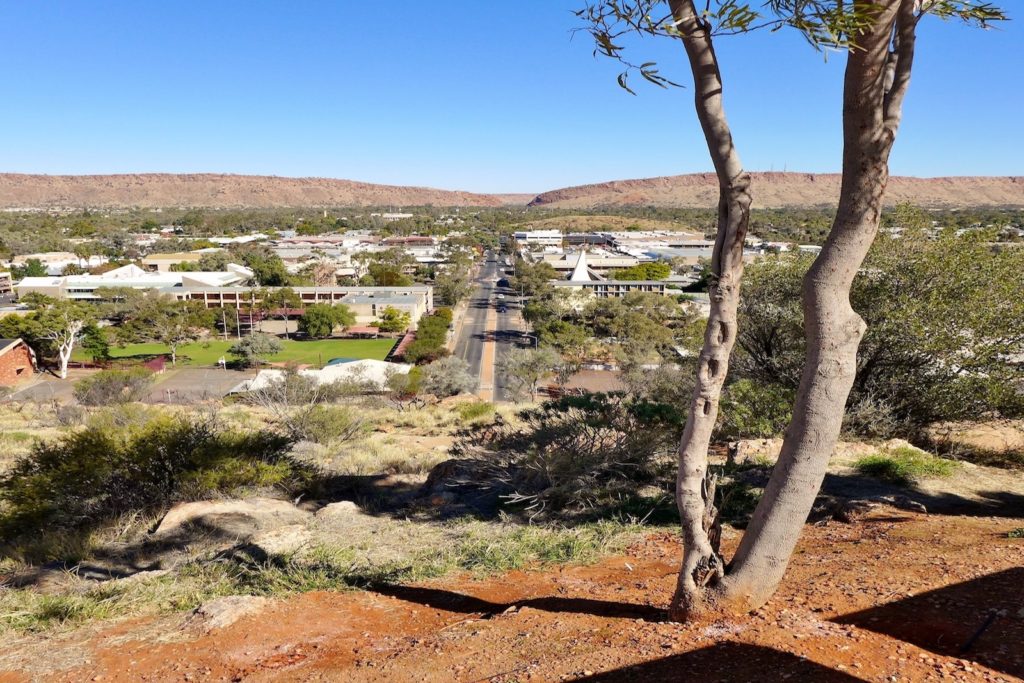
Where can residents go?
New South Wales
New South Wales does not have border restrictions with the Northern Territory.
Victoria
You’re allowed to leave and enter Victoria. You don’t have to quarantine after entering or travelling around Victoria.
However, there are restrictions on entering other states and territories from Victoria. Some states are closed to Victorians for the moment — or require travellers from Victoria to go into hotel quarantine — including New South Wales, Tasmania and South Australia.
Check the government website of the state or territory you wish to visit — before leaving Victoria.
You only need to quarantine if you’ve been advised by the Department of Health and Human Services that you have been to a high-risk location. If you’ve been directed to quarantine at home by health authorities, you can’t leave your home unless it’s for emergency medical care. The penalty for a breach of isolation orders can be up to $4,957.
Queensland
People from the Northern Territory can come to Queensland if they haven’t been in a COVID-19 hotspot in the past 14 days. All of Victoria, NSW — besides the Qld-NSW border zone — and the ACT is currently considered a hotspot.
From 1:00am on Friday 25 September, 2020, the ACT won’t be considered a hotspot and people in the Territory will be allowed to visit Queensland.
Western Australia
Northern Territory residents cannot enter Western Australia unless they’ve been granted an exemption.
Exemptions apply for:
- senior government officials in the course of their duties
- people with specialist skills not available in WA
- emergency workers
- entry on compassionate grounds
- people otherwise seeking approval to enter WA
South Australia
Travellers from the Northern Territory can enter South Australia without restriction.
Tasmania
All travellers arriving in Tasmania need to apply for an electronic G2G (‘Good to go’) PASS from g2gpass.com.au.
All non-essential travellers arriving in Tasmania must enter quarantine for 14 days.
Anyone who quarantines at a hotel will be charged $2,800 per person — or a special family rate — except where there’s extreme hardship.
Northern Territory residents — who are not classified as essential travellers — who have been in a high-risk location in the past 14 days won’t be able to enter Tasmania. These locations include the whole of Victoria and certain locations in Sydney. Those travellers will be turned back at their own expense.
For a list of high-risk locations, visit coronavirus.tas.gov.au and search for ‘Current high-risk locations’.
Australian Capital Territory
The Australian Capital Territory does not have domestic border restrictions with the Northern Territory.
Who can enter the Northern Territory?
Strict border controls apply for all access points to the Northern Territory.
Anyone arriving in the Northern Territory must complete a Border Entry Form. You can do this online up to 72 hours before entering the Territory at coronavirus.nt.gov.au.
Once you submit your application online, print it and bring it with you. You must provide your printed form or application reference number on your arrival to the NT.
If you don’t have a printer, you can take a screen shot of your application reference number and show this at the border.
Interstate arrivals
If you arrive in the NT, having travelled from or through a declared hotspot in the past 14 days, you must remain in mandatory supervised quarantine at a designated facility until 14 days have elapsed since you left the hotspot.
You’ll need to pay a quarantine fee, which is:
- $2,500 per person; or
- $5,000 for a family of 2 or more people sharing accommodation
Unaccompanied minors (under 18s) must also quarantine in a designated facility with a parent or responsible adult.
If you intend to travel to the NT from a declared hotspot, you’re strongly urged to reconsider your plans. Likewise, Territorians should reconsider travel to any hotspots.
You’re not considered to have been in a declared hotspot if you were only in the airport — for a stopover, for example — and did not leave the airport.
To find the locations of declared hotspots, visit coronavirus.nt.gov.au and search for ‘hotspots COVID-19’.
From Friday 9 October 2020, the NT will remove Greater Sydney’s status as a hotspot, subject to public health advice.
Anyone who breaches NT’s border restrictions may face a $5,000 fine.
If you’re travelling with a pet, you must arrange to accommodate the pet — at your own expense — before arriving in the NT.
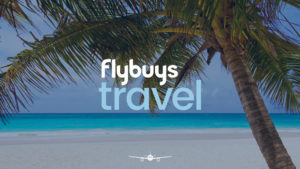
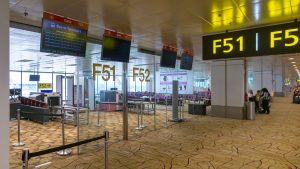

The article did state that Greater Sydney was included as a hotspot from 1am on 29 July, however it was part of a larger paragraph so may not have been as clearly presented as it could have been, apologies for that.
This guide has again be updated to now include all of NSW and the ACT as a hotspot. Thanks!
For the part pertaining to ‘South Australia’, the first part about New South Wales made an error of referring to ‘Western Australia” instead of ‘SA”.
Minor mistake, but you may want to correct it.
Thanks
Chris